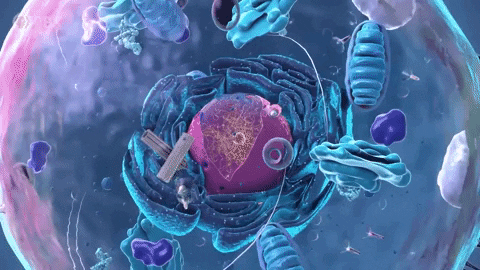
Smallest Unit of Life
Quiz by Eric Barrett
Feel free to use or edit a copy
includes Teacher and Student dashboards
Measures 3 skills from
- edit the questions
- save a copy for later
- start a class game
- automatically assign follow-up activities based on students’ scores
- assign as homework
- share a link with colleagues
- print as a bubble sheet
- Q1
Which of the following diagrams represents a virus?
#8b56085d-635c-40e5-9dbf-7bb35cf9e705/question/4925893b9a7233399bc170d16ca8262286959b2f.webp#8b56085d-635c-40e5-9dbf-7bb35cf9e705/question/d47cbc973ab6bba9d26c7d18bc2b110a7f4d5d39.webp30sBIOL.4c - Q2
The smallest unit of life is a�
cell
atom
element
molecule
30sBIOL.4a - Q3
A student views cells from several different prokaryotic and eukaryotic organisms under a high-powered microscope. Which of the following statements describes how the prokaryotic cells appear different from the eukaryotic cells?
The prokaryotic cells have mitochondria
The prokaryotic cells have a less distinct shape
The prokaryotic cells are much larger
The prokaryotic cells do not have nuclei
30sBIOL.4a - Q4
Which of the following cell characteristics provides evidence that this cell comes from a plant and not from an animal?
large vacuole
cell membrane
cytoplasm
nucleus
30sBIOL.4a - Q5
What is the function of the cell membrane?
to provide the jelly-like fluid to allow normal cell activities
to sort, package, and deliver proteins throughout the cell
to control what goes in and out of a cell
to provide digestive enzymes to clean to cell
30sBIOL.4a - Q6
What does semi-permeable mean?
to not� allow substances or molecules in and out of the cell
to allow all substances or molecules in and out of the cell freely
to allow certain substances or molecules in and out of the cell
to allow toxic substances or molecules in and out of the cell simultaneously�
30sBIOL.4a - Q7
Which statement is NOT a part of the cell theory?
Cells come from preexisting cells.
All living things are made of cells.
Cells are the basic unit of structure of living things.
Cell parts such as chloroplasts are self-replicating.
30sBIOL.4 - Q8
Which cell organelle is most directly involved in the bonding of amino acids?
endoplasmic reticulum
ribosome
mitochondrion
cell wall
30sBIOL.4 - Q9
Living things contain units of structure and function that arise from preexisting units. This statement best describes the��
concept of natural selection
heterozygous hypothesis
lock-and-key model of enzyme activity�
cell theory
30sBIOL.4 - Q10
Which group of organelles is directly responsible for the production of new molecules within the cell?
endoplasmic reticulum, plastids, vacuoles
ribosomes, endoplasmic reticulum, Golgi bodies
Golgi complex, the lysosome, plasma (cell) membrane�
nucleolus, vacuoles, ribosome
30sBIOL.4 - Q11
The diagram shown represents a cell. Match each letter with its correct organelle
1- mitochondria� �2- cell membrane� 3- lysosome� 4- nucleus
1- ribosome� �2- chromosomes 3- nucleolus�
1- golgi bodies� �2- cell wall� � 3- lysosome� 4- endoplasmic reticulum
1- cytoplasm� �2- nucleus� �3- cell membrane� �4- ribosome�
30sBIOL.4 - Q12
Which of the following is found in plant cells, but not in animal cells?
�
endoplasmic reticulum
mitochondria
ribosome
cell wall
30sBIOL.4 - Q13
The dots or spots on the endoplasmic reticulum represent�
cytoplasm
ribosomes
mitochondria
lysosomes
30sBIOL.4a - Q14
What is the jelly-like fluid that flows throughout a cell?
cytoplasm
plasma membrane
ribosome
mitochondria�
30sBIOL.4a - Q15
What substance do Golgi bodies package and deliver around the cell?
protein
sugars
starches
lipids
30sBIOL.4a